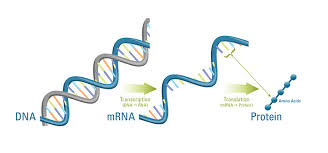Related Flashcards
Cards In This Set
| Front | Back |
|
Reinforcement
|
Use of rewards & punishment that increase or decrease the likelihood of a simliar response occurring in the future
|
|
Why principles of reinforcement are complex
|
- people react differently to the same reinforcement
- people are unable to repeat desirable behaviors
- people receive different reinforcers in different situations
|
|
Approaches to influencing behavoir
|
1. positive approach - focuses on rewarding appropriate bahaviors (increases likelihood of them occurring in the future)
2. negative approach - focuses on punishing undesirable behaviors (should lead to future redirection of these inappropriate bahaviors)
|
|
TARGET approach to creating a positive motivational climate
|
Tasks
Authority
Rewards
Groupings
Evaluation
Timing
|
|
The predominant apporach to PA should be which of the two approaches and why
|
Positive beacause negative often instills fear in pariticpants
|
|
What percentage range of reinforcement should be positive
|
80-90%
|
|
Drawbacks of punishment
|
- can arouse fear of failure
- can act as a reinforcer
- can create an unpleasant , aversive learning environment
|
|
Behavior program principles
|
1.target behaviors you want to change
2. define targeted bahaviors
3.record behaviors
4.provide meaningful feedback
5.state outcomes clearly
6. tailor rewards system
|
|
Ways to choose & monitor target behaviors
|
- direct observations (single behaviors)
- behavioral checklists (multiple behaviors)
-athlete self-monitoring
- videotape practice, pre-comp, comp
- post comp videotape reconstruction of verbal behavior
|
|
Intrinsic motivation
|
Striving inwardly to be competent and self determining, in ones quest to master tasks
|
|
Factors influencing intrinsic motivation
|
1. social
- success & failure
- focus on comp
- coaches bahavior
2. psychological
- need for competence, autonomity, relatedness
|
|
Higher levels of intrinsic motivaton are related to
|
- competitive success
- positive feedback
- autonomous (democratic) coach
- recreational sport
- high perceived competence
- high perceived control
-rewards that increase the informational aspects & provide postitive feedback about competence
- rewards that contribute to an internal locus of causality increase intrinsic motivation (controlling aspects)
|
|
Cognitive evaluation theory
|
How rewards are perceived is ciritical in determining whether intrinsic motivation increases or decreases
controlling aspects:
- rewards that are perceived to control a person decrease intrinsic motivation
infomational aspects:
rewards that suggest the person is not competent decrease intrinsic motivation
|
|
How to increase intrinsic motivation
|
- provide successful experiences
- give rewards contingent on performance
- use verbal and non-verbal praise
-vary content & sequences of practice drills
- involve participants in decisions
- set realistic performance goals
|
|
Flow
|
A holistic, intrinsically motivating sensation that people feel when they are totally involved in an acitivity of on 'auto pilot'
|







